Hike on the Great Wall of China
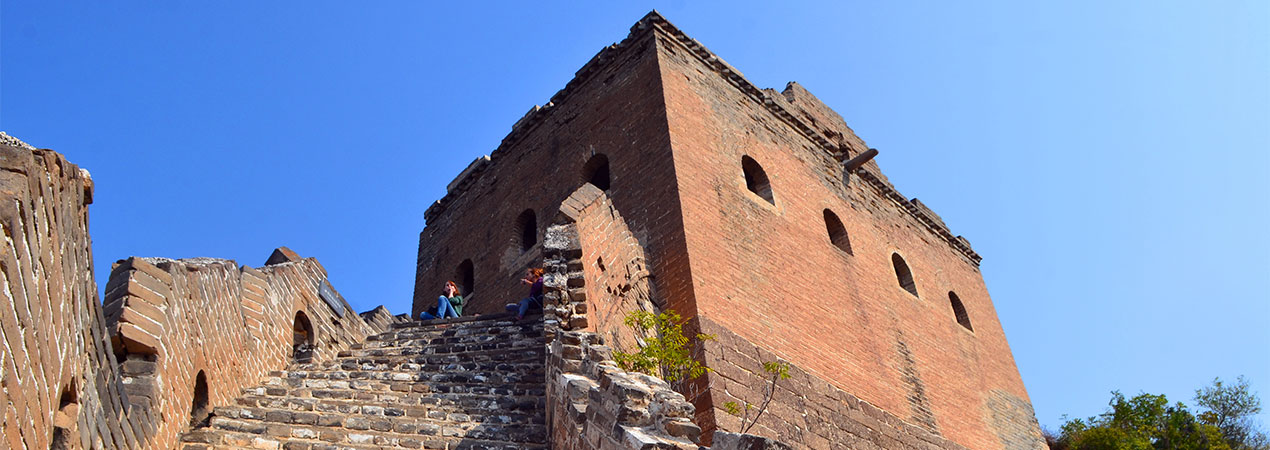
“He who has not climbed the Great Wall is not a true man.”
---Mao Zedong (Mao Tse-Tung, Chinese leader)
The Great Wall of China is an ancient series of walls and fortifications, totaling more than 21,196km (13,000 miles) in length, located in northern China. Perhaps the most recognizable symbol of China and its long and vivid history, the Great Wall was originally conceived by Emperor Qin Shi Huang in the third century B.C.E as a means of preventing incursions from barbarian nomads.
The best-known and best-preserved section of the Great Wall was built in the 14th through 17th centuries CE, during the Ming dynasty. Though the Great Wall never effectively prevented invaders from entering China, it came to function as a powerful symbol of the Chinese civilization’s enduring strength.
There are 575km (359miles) of the wall near Beijing, and about 40km (25miles) of the wall have been restored. There are several wild (unrestored) sections of wall that you can visit with a guide near Beijing. That’s why Beijing is the gateway to Great Wall.
Hiking along the wall, discovering different aspect of the Wall and listening to a guide’s explanations make it a unique experience. Another benefit of hiking the Wall is you can travel at a slow pace, so you can have more time to learn the history of the wall and appreciate the scenery along it.
There are a number of ways to visit the Wall from Beijing. You can do it on a day trip or independently. You can just visit one section of the Wall if your time is limited. Alternatively, and the best option, is to book a multi-day, multi-section hike on the wall. This will give you the best overview of the Great Wall of China and a chance to explore both sections that have been restored and those that have been left to nature.
Our article below focuses on the difference between different sections of the Wall. We hope that you can use it as a guide to choose the best section for your tour to the Wall.
The Most Recommended Hiking Routes on Great wall
1. Mutianyu Great Wall – “Most Beautiful Watch Towers on the Wall”
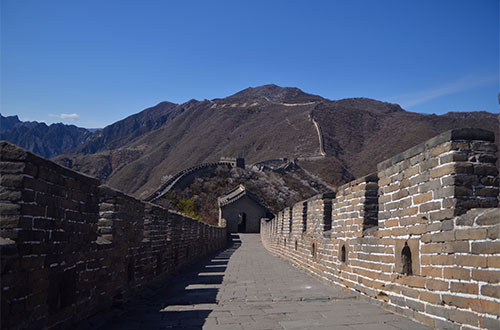
As popular as Badaling, but less crowded, the Mutianyu section is the perfect choice for visitors who have limited time. This 5.4-kilometer (3.3miles) section was fully restored in 1986 and it boasts beautiful scenery filled with green pines and cypresses. There are 22 watchtowers along the wall and they are the most beautiful ones on whole of the Great wall. The Wall climbs and descends steeply, so strong legs and good walking shoes are a must. To save your energy, we recommend that you take the cable car to watch tower No.14, then hike the round trip to watch tower No.23 and then descend by cable car, this is the most beautiful part of the wall. A more challenging route is taking the chairlift to watch tower No.6, then hiking to watch tower No.23, and then returning to watch tower No. 6 and descending by chairlift (or toboggan) .
2. Badaling Great Wall – “First Section Opened to Public”
This section of wall was the first section opened to tourists (in 1957) after reconstruction. It is the most visited section, hence also the best maintained section of the Great Wall. There are usually a lot of people in this section. It’s the section most frequently visited by world leaders, including Ronald Reagan, Queen Elizabeth and Barack Obama. Just like Juyongguan, this 7.5 km (4.6miles) section was originally constructed during the Ming Dynasty in 1368 – 1644 to defend Beijing from invasion by the Mongolians to the north. The stairs are not as steep, and it is equipped with handrails, making it much easier to climb and a good option if you need assistance.
3. Juyongguan Great Wall – “Closest Wall to Beijing”
Located about 60km (37.5miles) from Beijing, Juyongguan Great Wall is the closest section to Beijing. It is named after Juyong Pass which is one of the three most famous passes along the Great Wall of China, and the other two are Jiayuguan Pass in the west end of the Great Wall and Shanhaiguan Pass in the east end of the wall. Listed in the World Heritage site in 1987, it was considered in ancient times to be one of the most strategically important sections because of its location. Both sides of the Juyong Pass are steep mountains. In the middle, there is a deep valley with a length of 15 km (9miles). The Juyongguan Great Wall section was built during the Ming Dynasty (1368–1644) and in this pass were fought great battles against Jurchen, Mongol, and more recently, Japanese invaders.
The path along the Great Wall is a loop with a length of about 7 km (4.3miles). The western part of the wall is steep but more beautiful. The eastern part is gentler.
4. Huanghuacheng Great Wall – “Water Great Wall”
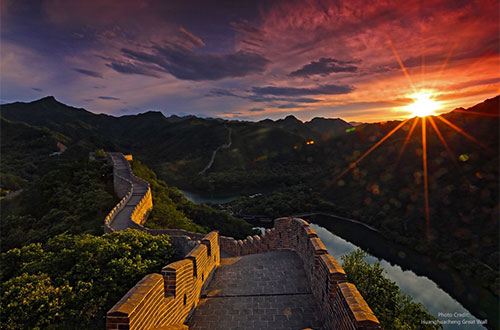
The Huanghuacheng section of the Great Wall is the only lakeside stretch of the colossal structure in Beijing. It is located in Huairou District, some 70 km (43miles) north of the city center. This section was also built during the Ming Dynasty (1368-1644) and is well known for its beautiful natural and man-made landscapes. It was also called the ‘Water Great Wall’ because of the reservoir nearby. The Huanghuacheng section of the Great Wall has exceptional views of the surrounding valleys and unique water scenery that makes it stand apart from other sections.
The name Huanghuacheng means “wall with yellow flowers”. During the summer time, you can see a field of wildflowers in the village below. You can hike 4km (2.5miles) to 8km (5miles) on the wall.
5. Gubeikou Great Wall – “Oldest Wall in Beijing Area”
Located in Miyun County, 120km (75miles) from the city center of Beijing, Gubeikou Great Wall is an unrestored part of the wall. In a wide sense of the word, Gubeikou Great wall includes Panlongshan (Coiling Dragon Mountain) Great wall, Wohushan (Crouching Tiger Mountain) Great Wall, Jinshanling Great wall and Simatai Great Wall. But here we just refer it to as Panlongshan (Coiling Dragon Mountain) Great wall and Wohushan (Crouching Tiger Mountain) Great Wall. The Gubeikou Great Wall had a high strategic significance in ancient times because of its location near the mountain pass between Beijing and Chengde. The wall was firstly built in the 6th century (that makes it the oldest wall in the Beijing area) and reconstruction works continued into the 16th century. Most of the Wall we can see now was built in the 16th century.
The Gubeikou Wall, unlike many other sections, has never been restored. At some points it’s easy to forget you’re walking on the Great Wall of China as the rock has crumbled and you can’t really see the wall. There are also some areas where you actually can’t walk on the wall as it is so crumbled. Nevertheless, seeing the wall in its real state, without any fixes being made to it, is quite something. It is about 10km (6miles) from Gubeikou to Jinshanling.
6. Jinshanling Great Wall – “Hiker's Favorite”
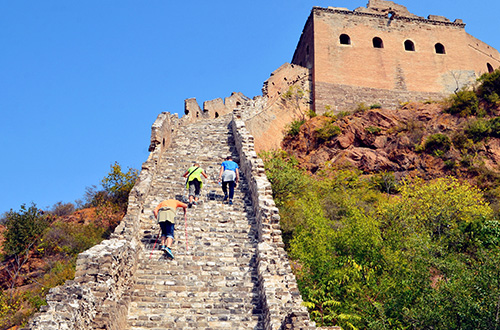
The Jinshanling Great Wall lies in the mountainous area of Luanping County, Hebei Province,130km (81miles) from Beijing. The Jinshanling Great Wall was first built in the sixth century. Jinshanling is a beautiful mountainous part of the Great Wall with both restored and unrestored sections. Since Jinshanling is further from Beijing than other popular sections, it is less crowded. This section has several towers you can climb up to see more views of the wall and surrounding mountains. In the past, you could hike all the way to the Simatai section, but you can ’t do that now as the Simatai Great Wall became a part of Gubei Water Town. It is 10.5km (6.5 miles) for the hike from Jinshanling Great Wall to west of the Simatai section.
7. Simatai Great Wall –“Night Hike On the Wall”
Located in Miyun County, 120 km (75miles) northeast of Beijing, Simatai Great wall is actually linked to Jinshanling Great wall. It is about 5.7 km (3.5miles) with 35 watchtowers. Part of the wall is very steep.
Simatai was the earliest section open for night tours (Badaling also opens for a night tour in 2021). It is also one of the brightest lit sections of the Great Wall. Enjoy a night stroll at the walls and take in the night view of the surrounding countryside. It is a part of Gubei Water town – a tourist attraction with restaurants, hotels and bars. You can stay overnight in a hotel in the town.
8. Jiankou Great Wall – “Most Dangerous Unrestored Wall”
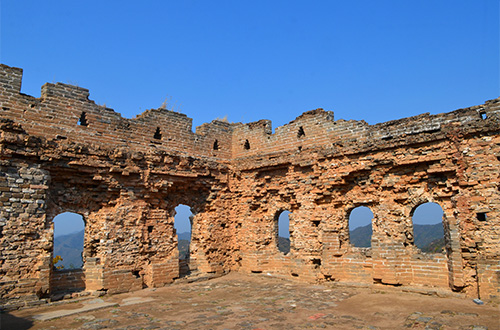
Jiankou Great Wall is 70 km (43.5 miles) from Beijing. It was first built during the Tang Dynasty (in 618-907) and was restored largely in the Ming Dynasty (1368-1644). It connects to Mutianyu Great Wall in the east. It was named Jiankou (Arrow Nock – the notch in the feathered end of an arrow) as the Wall is in the shape of the letter W.
The Jiankou section is a more dangerous part of the Great Wall because it has not yet been restored, which is why it is officially closed for tourists. No measures are taken, though, to prevent anyone from climbing the wall. We strongly suggest that you only go there if you’re physically fit and with a local guide. The most popular route is the 9.6km (6 miles) hike from Jiankou to Mutianyu.
9. Huangyaguan (Huangya Pass) Great Wall – “Where you can run a Marathon on it”
Located in Ji County of Tianjin, some 120km (75miles) from Beijing, Huangyaguan Great Wall features fortresses, statues, waterways and towers, and a village in the foothills – making it one of the most majestic Great Wall experiences in the country. It was first built in the 6th century and reconstructed under the supervision of General Qi Jiquang (Qi pronounced ‘Chee’ or ‘chi) in the Ming dynasty (1368-1644). General Qi is best known for leading Ming forces to defend China's eastern coastal regions from raids by the Japanese pirates and is widely regarded as a national hero in Chinese culture.
Huangyaguan has hosted the largest Great Wall Marathon (of 8.5 km/5.3miles) every May since 1999.
Great Wall Hiking Tips
To help you fully enjoy the hike on the Great Wall, we would like to offer tips to help make your trip a success:
1) Decide which section(s) to visit
Choose the section that is best for the amount of time you have, your physical ability, and what you are interested in seeing. If you just want to experience the Great wall, we recommend the fully restored sections that is close to the city center: Juyongguan, Badaling or Mutianyu. But if you want to visit the off-the-beaten-track sections for multiple days, you could consider Gubeikou, Jinshanling and Simatai.
The best time to visit the Great Wall of China is in the spring or autumn, when it's not too hot or too cold. While it is possible to hike to the Great Wall on your own, you'll have a much easier time if you hire a guide and driver.
2) What to Wear
Be sure to check the weather forecast before your trip. For fully restored sections of the wall, normal sneakers are Ok, but for unrestored sections like Gubeikou or Jiankou, you'll want to wear hiking boots and bring a walking pole. The Wall is high in the mountains, so there's typically more snow here than below in Beijing. Pants and long sleeves are recommended for the hike up the mountain to prevent scratches from bushes and branches. Dress in layers, as you may get warm once you get up on top of the Wall and into the sun. Moisture-wicking fabrics are also recommended as you're likely to work up a sweat!
3) What to Bring
You’ll most likely be out on the Wall for hours. Bring high energy snacks to keep you going. Bring enough water but keep in mind that there are very few restrooms available.
It is good idea to carry a small backpack to house your snacks, water, camera, and other supplies. There is no shade on the Wall, so you’ll want a hat and a high SPF sunblock to protect your skin. There are no restrooms on the Wall except for the restored sections, so be prepared in case you need to go outdoors! The restrooms in the restored sections typically do not have toilet paper or hand soap – so bring TP and hand sanitizer!
Last but not least, you need to be aware of the Great Wall tour scams. These tours reel in suckers at popular tourist sites by offering cheap tours. Some of them are as cheap as 50 yuan (7 USD) per person for one day Great Wall tour. They make their money on the commissions they make from the forced tourist traps along the way. You’ll make painfully long stops to souvenir shops, jade and gem factories. So make sure to ask exactly how many stops your tour will take and for how long. Book your tour through a reputable company. You always get you pay for.
Drop us a line and we'll connect you with the top China expert in no time!
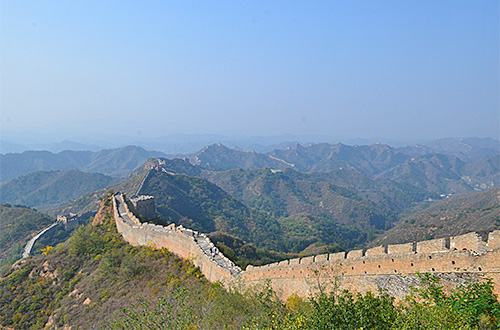 Private Jinshanling Great Wall Hiking Day Tour
Private Jinshanling Great Wall Hiking Day Tour 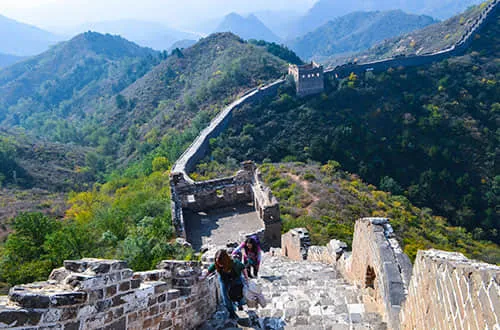 Hiking the Original Great Wall Sections in Beijing
Hiking the Original Great Wall Sections in Beijing 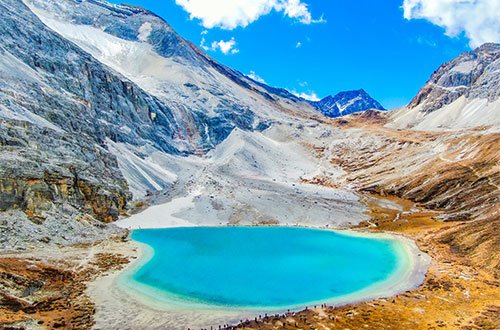 Top-Rated Hiking Trails in China
Top-Rated Hiking Trails in China 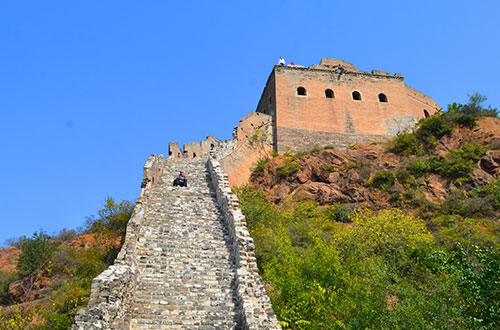 10 Easy Hiking Trails for Beginners
10 Easy Hiking Trails for Beginners